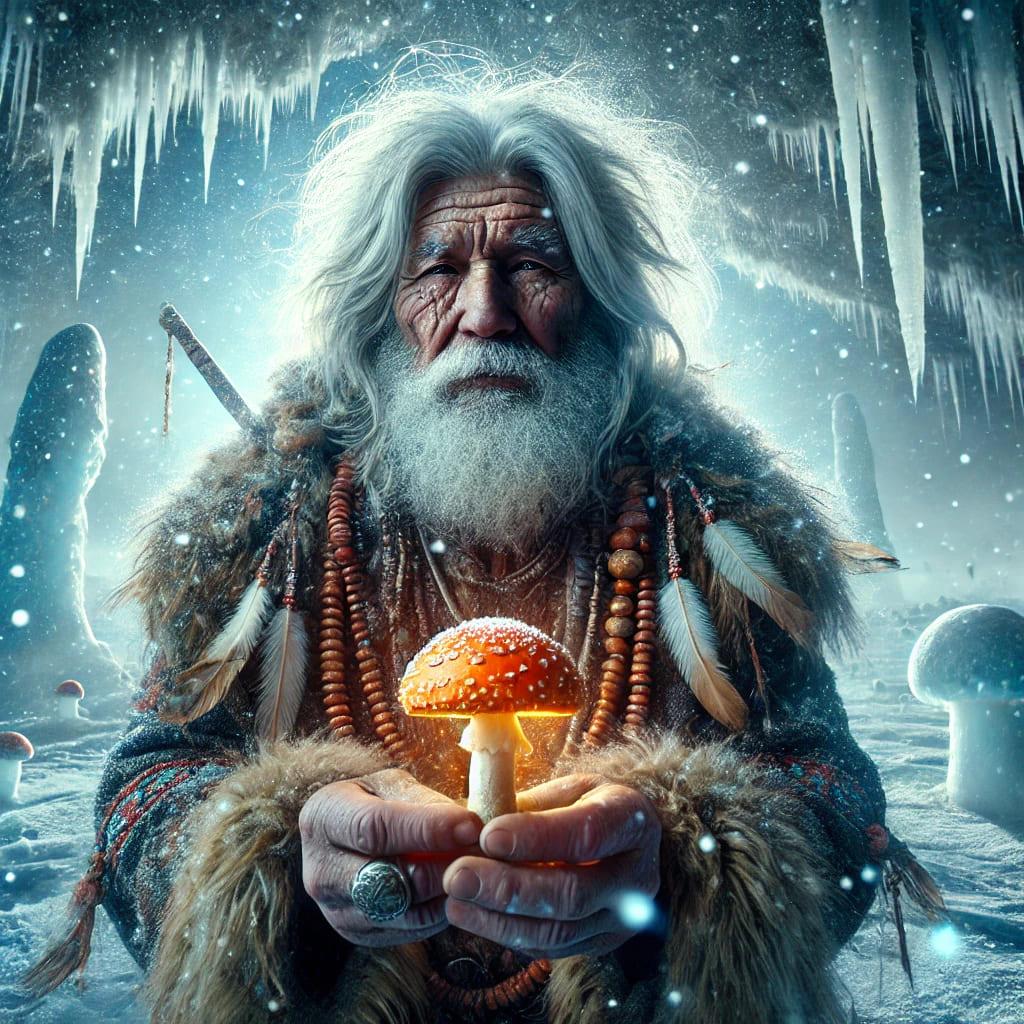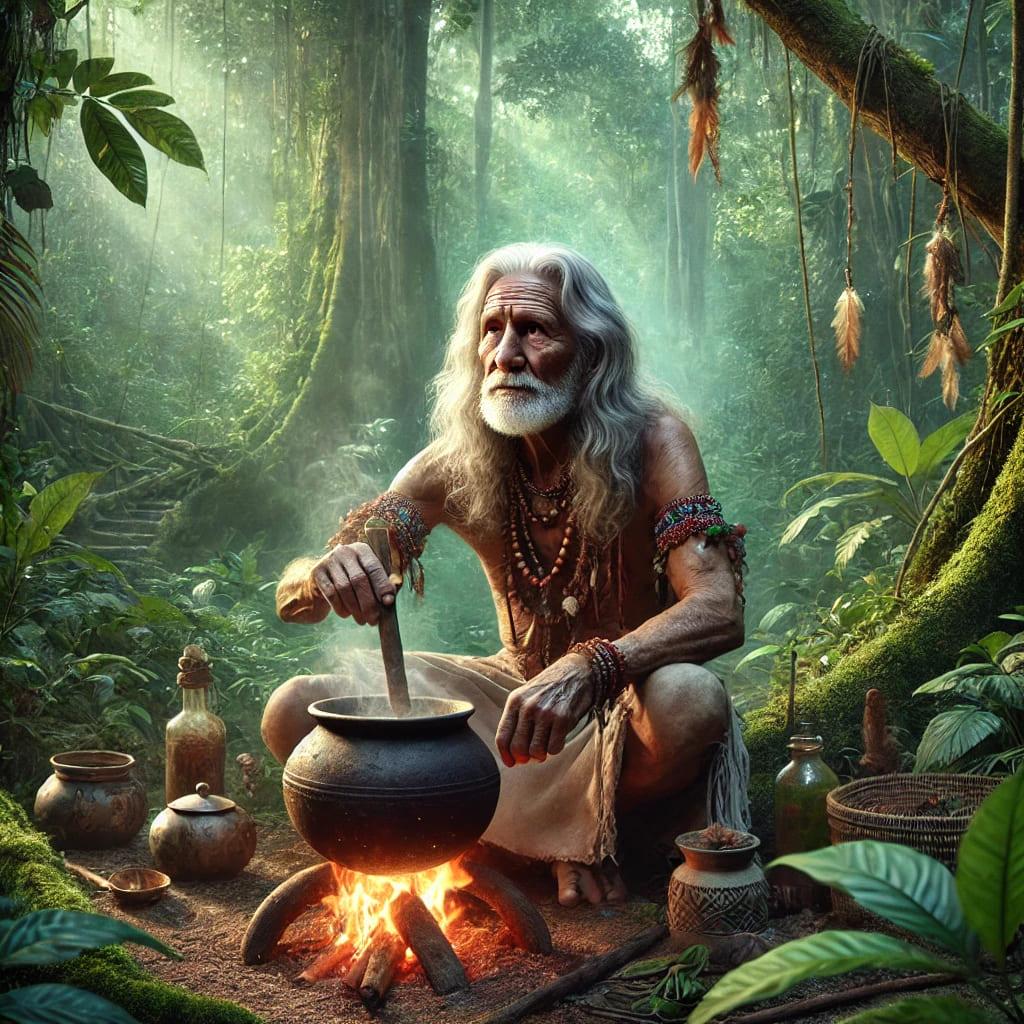Rituals have played an essential role in human societies since the dawn of civilization, serving as a bridge between the physical and spiritual realms. Across cultures and throughout history, the use of psychoactive substances—commonly referred to as “drugs” in contemporary times—has been integral to these rituals. These substances, whether naturally occurring or synthesized, have been used to alter consciousness, induce visions, and facilitate spiritual experiences. This blog post delves into the fascinating history of drugs in rituals, exploring their role in ancient traditions, modern practices, and their impact on the human psyche. We will also discuss the potential risks associated with these practices and offer recommendations for safety.
1. Ancient Rituals and the Use of Psychoactive Substances
1.1 The Shamanic Traditions of Siberia
One of the oldest known uses of psychoactive substances in rituals can be found in the shamanic traditions of Siberia. Shamans, who were spiritual leaders, healers, and intermediaries between the human world and the spirit world, used a variety of substances to enter altered states of consciousness. The Amanita muscaria mushroom, with its distinctive red cap and white spots, was one of the most important substances in these rituals.
The consumption of Amanita muscaria was believed to allow the shaman to transcend the physical realm and communicate with spirits, ancestors, and deities. The effects of the mushroom, which include vivid hallucinations and altered perceptions of reality, were seen as a way to access hidden knowledge and gain insights that were crucial for the well-being of the community. The shaman’s journey was not merely for personal enlightenment but served a broader purpose, such as healing the sick, predicting the future, or ensuring a successful hunt.
1.2 The Eleusinian Mysteries of Ancient Greece
Another significant example of drug use in ancient rituals comes from the Eleusinian Mysteries, a series of secret religious ceremonies held annually in ancient Greece. These rites were dedicated to Demeter and Persephone, goddesses associated with agriculture and the cycle of life and death. The mysteries, which took place in the town of Eleusis, near Athens, were among the most important religious events of the time, attracting participants from all over the Greek world.
Central to the Eleusinian Mysteries was the consumption of a sacred drink called kykeon, which some scholars believe contained psychoactive substances. While the exact ingredients of kykeon remain a mystery, it is widely speculated that it may have included ergot, a fungus that grows on rye and other grains. Ergot contains lysergic acid, a precursor to LSD, and can induce powerful hallucinogenic experiences.
The initiation into the Eleusinian Mysteries involved a symbolic journey of death and rebirth, with participants experiencing a profound transformation of consciousness. The visions and insights gained during the ritual were considered to be a direct encounter with the divine, providing a deep understanding of the mysteries of life and death.
1.3 Ayahuasca in Amazonian Shamanism
In the rainforests of the Amazon, indigenous tribes have used ayahuasca, a potent psychoactive brew, for centuries as part of their spiritual and healing practices. Ayahuasca is made from the Banisteriopsis caapi vine and the leaves of the Psychotria viridis shrub, which together create a brew containing the powerful hallucinogen DMT (dimethyltryptamine).
Ayahuasca ceremonies are typically led by a shaman or healer, known as an ayahuasquero, who guides participants through their journey. The experience is often intense, involving vivid visions, emotional catharsis, and profound insights. For the indigenous peoples of the Amazon, ayahuasca is not merely a drug but a sacred medicine, used to heal physical, emotional, and spiritual ailments, and to communicate with the spirits of the jungle.
The ritual use of ayahuasca has gained global attention in recent decades, with many Westerners traveling to the Amazon to participate in ceremonies. The globalization of ayahuasca has sparked a complex debate about the cultural appropriation of indigenous practices and the ethical implications of its use outside of its traditional context.

2. Modern Rituals and the Continued Use of Drugs
2.1 The Revival of Psychedelic Rituals in the West
In recent years, there has been a resurgence of interest in the use of psychedelics for spiritual and therapeutic purposes in the West. This revival is part of a broader movement often referred to as the “psychedelic renaissance,” which has seen a growing acceptance of substances like psilocybin (the active compound in magic mushrooms), LSD, and MDMA in both scientific research and underground rituals.
Many of these modern rituals draw inspiration from ancient traditions, but they are often adapted to fit contemporary needs and beliefs. For example, guided psilocybin sessions are increasingly used as a form of therapy for conditions like depression, anxiety, and PTSD. These sessions typically involve a trained facilitator who creates a safe and supportive environment for the participant to explore their inner world.
The use of psychedelics in modern rituals is often framed as a means of personal growth, self-discovery, and healing. Participants report experiencing profound spiritual insights, a sense of connection to the universe, and a deeper understanding of their place in the world. However, these experiences are not without risks, and the unregulated nature of many modern psychedelic rituals can lead to negative outcomes if not approached with caution.
2.2 The Role of Cannabis in Contemporary Spirituality
Cannabis, once a taboo substance, has become increasingly accepted in many parts of the world, not only as a recreational drug but also as a tool for spiritual exploration. In various spiritual communities, cannabis is used in rituals to enhance meditation, deepen introspection, and facilitate a sense of connection to the divine.
One example of this is the Rastafarian religion, which originated in Jamaica in the 1930s. Rastafarians consider cannabis, or “ganja,” to be a sacrament that brings them closer to Jah (God). The ritual smoking of cannabis is an integral part of Rastafarian worship and communal gatherings, where it is believed to cleanse the body, open the mind, and promote peace and unity.
In the broader context of contemporary spirituality, cannabis is often used in combination with practices like yoga, breathwork, and sound healing. Many users report that cannabis helps them to relax, quiet the mind, and achieve a meditative state more easily. However, as with other psychoactive substances, the use of cannabis in spiritual rituals requires careful consideration of dosage, intention, and context.
2.3 Synthetic Drugs in Modern Urban Rituals
The rise of synthetic drugs, such as MDMA (commonly known as ecstasy or molly) and ketamine, has given birth to new forms of ritual in urban environments, particularly within the electronic dance music (EDM) scene. While these substances are often associated with recreational use, they also play a significant role in the spiritual experiences of many participants.
In the context of a music festival or rave, the combination of rhythmic music, communal dancing, and the effects of MDMA can create a powerful sense of unity and euphoria. For some, this experience is more than just a party; it is a form of modern-day ritual that fosters deep emotional connections and a sense of transcendence.
Ketamine, a dissociative anesthetic, has also found its place in both therapeutic and recreational settings. In recent years, ketamine-assisted therapy has gained attention for its potential to treat depression and other mental health disorders. In a ritualistic context, ketamine is sometimes used to induce a state of detachment from the ego, allowing for a profound exploration of consciousness and a reexamination of one’s sense of self.
These modern rituals, while offering potential benefits, also carry significant risks, especially when synthetic drugs are used in uncontrolled environments. The possibility of overdose, substance abuse, and psychological harm is ever-present, making it crucial for participants to approach these experiences with caution and respect.

3. The Impact of Drugs on Rituals: Psychological and Spiritual Dimensions
The use of psychoactive substances in rituals can have profound effects on both the individual and the community. These effects can be understood through the lenses of psychology, spirituality, and sociology.
3.1 The Psychological Impact
Psychoactive substances, particularly psychedelics, have been shown to alter brain activity in ways that can lead to profound changes in perception, cognition, and emotion. These changes are often described as mystical or transcendent, involving a sense of unity, ego dissolution, and a heightened awareness of the present moment.
From a psychological perspective, the altered states of consciousness induced by these substances can facilitate deep introspection and emotional processing. Participants in rituals often report gaining insights into their personal lives, resolving internal conflicts, and experiencing a sense of catharsis. In therapeutic settings, these experiences are sometimes referred to as “breakthroughs,” where the individual is able to confront and overcome psychological barriers that may have been resistant to traditional forms of therapy.
However, these psychological effects can also be overwhelming, particularly if the experience is not properly guided or if the participant is unprepared. Bad trips, where the individual experiences intense fear, confusion, or distress, are a well-known risk of psychedelic use. In some cases, these negative experiences can lead to long-term psychological harm, including anxiety, depression, and PTSD.
3.2 The Spiritual Impact
For many people, the use of drugs in rituals is deeply intertwined with their spiritual beliefs and practices. The altered states of consciousness induced by substances like ayahuasca, psilocybin, and cannabis are often perceived as gateways to the divine, providing a direct experience of the sacred that is difficult to achieve through other means.
These spiritual experiences can be transformative, leading to a reorientation of values, a deeper sense of purpose, and a greater connection to the world around them. In some traditions, such as the Native American Church’s use of peyote, the visions and insights gained during rituals are considered messages from the spirit world, guiding the individual on their life path.
However, the spiritual impact of drug-induced rituals can also be complex and ambiguous. Not all experiences are positive, and the integration of these experiences into everyday life can be challenging. The risk of spiritual bypassing, where the individual uses the ritual as a way to avoid dealing with underlying issues, is also a concern. Furthermore, the commercialization and commodification of these practices in the modern world can dilute their spiritual significance, reducing them to mere recreational activities.
4. The Ethics and Safety of Drug Use in Rituals
The use of drugs in rituals raises important ethical questions, particularly in relation to cultural appropriation, consent, and harm reduction.
4.1 Cultural Appropriation and Respect for Indigenous Practices
As psychoactive substances like ayahuasca and peyote have gained popularity in the West, there has been growing concern about the appropriation of indigenous practices. These substances are often removed from their cultural and spiritual contexts, leading to a superficial or distorted understanding of their significance.
For indigenous communities, the use of these substances is not merely a means to achieve altered states of consciousness but is deeply embedded in their worldview, traditions, and way of life. The commercialization of these practices can be seen as a form of exploitation, where the spiritual heritage of indigenous peoples is commodified for profit.
To approach these rituals with respect, it is important to understand their cultural context and to engage with them in a way that honors their origins. This might involve seeking out authentic experiences led by indigenous practitioners, supporting efforts to protect indigenous knowledge and practices, and being mindful of the power dynamics at play.
4.2 Consent and Autonomy
The use of drugs in rituals, particularly in a group setting, raises questions about consent and autonomy. Participants should have a clear understanding of the substance they are ingesting, its effects, and the potential risks involved. Informed consent is crucial, particularly in settings where there may be pressure to participate or where the effects of the substance could impair judgment.
Facilitators and leaders of these rituals have a responsibility to ensure that participants are fully informed and that their autonomy is respected. This includes providing accurate information about the substance, offering support during the experience, and respecting the individual’s right to opt out or leave the ritual at any time.
4.3 Harm Reduction and Safety
While the use of drugs in rituals can offer profound benefits, it is not without risks. Harm reduction strategies are essential to minimize these risks and to ensure the safety and well-being of participants.
Some key harm reduction strategies include:
- Education: Providing participants with accurate information about the substance, including its effects, dosage, and potential risks.
- Set and Setting: Emphasizing the importance of a safe and supportive environment, both physically and emotionally, and encouraging participants to approach the experience with a positive mindset.
- Preparation: Helping participants to prepare for the experience, both mentally and physically, and to set clear intentions for the ritual.
- Unterstützung: Ensuring that there is adequate support during the experience, including trained facilitators who can provide guidance and assistance if needed.
- Integration: Offering resources and support for participants to integrate their experiences into their daily lives, including follow-up sessions, counseling, or peer support groups.
- Medical Considerations: Being aware of any medical conditions, medications, or psychological vulnerabilities that might contraindicate the use of the substance, and having a plan in place for dealing with emergencies.
Conclusion: The Future of Drugs in Rituals
The use of drugs in rituals is a complex and multifaceted practice that spans cultures, histories, and belief systems. From the shamanic traditions of Siberia to the modern-day psychedelic renaissance, these substances have played a significant role in shaping human consciousness and spiritual experiences.
As we move forward, it is essential to approach these practices with respect, awareness, and a commitment to safety. This means honoring the cultural origins of these rituals, ensuring informed consent, and adopting harm reduction strategies to minimize risks. By doing so, we can continue to explore the profound potential of these substances while respecting their power and significance.
Whether you are drawn to these practices for personal growth, healing, or spiritual exploration, it is important to approach them with an open mind and a cautious heart. The journey into altered states of consciousness can be transformative, but it is not without its challenges. With the right guidance, preparation, and support, however, it is possible to navigate these experiences safely and to reap the benefits that they have to offer.
Safety Recommendations:
- Educate Yourself: Before participating in any ritual involving psychoactive substances, make sure you thoroughly research the substance, its effects, and its risks.
- Choose the Right Environment: Ensure that the setting for the ritual is safe, supportive, and conducive to a positive experience.
- Start Small: If you are new to these practices, consider starting with a lower dose to gauge your reaction to the substance.
- Seek Guidance: Work with experienced facilitators or shamans who can provide support and guidance during the ritual.
- Consider Your Health: Be mindful of any medical conditions or medications that could interact negatively with the substance.
- Integrate Your Experience: After the ritual, take time to reflect on your experience and seek out resources to help integrate it into your daily life.
- Respect Cultural Origins: Approach rituals with an understanding of their cultural context and seek to honor the traditions from which they come.
By following these recommendations, you can help ensure that your exploration of drug-induced rituals is both safe and meaningful, allowing you to tap into the profound potential that these practices offer.






0 Kommentare für "The Role of Drugs in Rituals: From Ancient Traditions to Modern Practices"